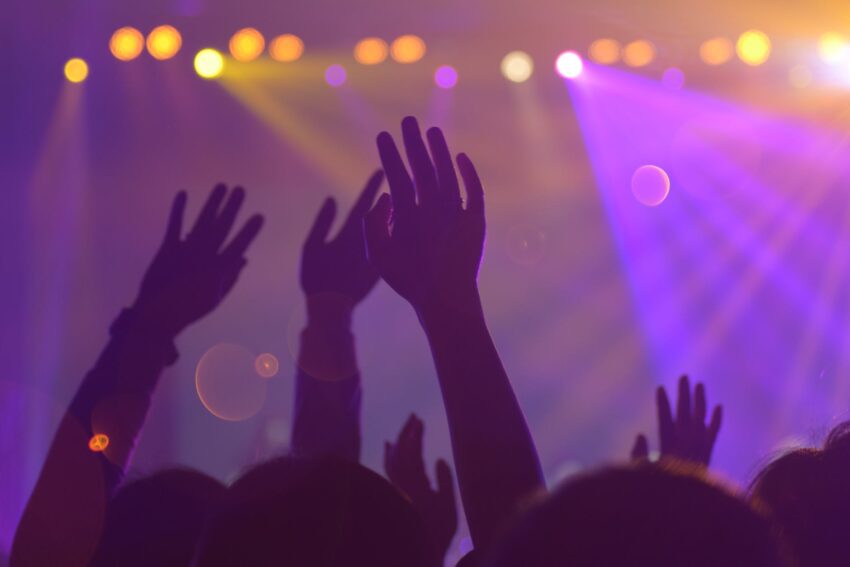The social, musical, and artistic movements of the 1960s and 1970s significantly influenced the areas of music and visual art. Chief among these was the culture of counterculture, a socio-political movement questioning and rejecting the mainstream’s norms, values, and customs. During this time, a distinctive manifestation of the counterculture – psychedelic rock and visuals – swirled its vibrant hues and resonant melodies into our cultural fabric.
Psychedelic rock, along with its visual counterparts, sought to recreate and express the altered states of consciousness experienced during psychedelic trips. Characterized by extended instrumental solos, exotic instrumentation, and experimental studio effects, this genre deeply inflected the landscape of popular music. Essential acts of psychedelic rock, such as Pink Floyd and The Grateful Dead, emerged during this era, using their music to explore the mind’s outer fringes.
This exploration wasn’t limited to sonic landscapes alone. The album covers of these bands became the tangible, visual representations of the music within, just as vibrant and profound. The album art, a potent medium, tacitly invited spectators to the trippy visuals of a synesthetic journey, where sounds had shapes and colors. Notorious album covers, like Pink Floyd’s “Dark Side of the Moon” or The Grateful Dead’s “Aoxomoxoa,” have etched a permanent mark in visual arts history.
These unique, mind-expanding album covers were the product of visionary artists. The likes of Mati Klarwein, Roger Dean, and Storm Thorgerson graced numerous albums with their multi-layered, surreal, and dream-like illustrations. Klarwein’s artwork for Miles Davis’ “Bitches Brew” captures the music’s chaotic and unpredictable spirit, while Thorgerson’s design for “Dark Side of the Moon” presents an image as iconic as the music it encases.
Modern-day music festivals inherit this tradition of fusing music with visual arts. Far from just a gathering of music fans, these festivals are a multisensory spectacle, bringing together visual art installations, theatrical performances, crafts, and more. With the rise of digital media, the potential for creating immersive, multi-dimensional experiences is even greater.
At festivals such as Burning Man or Coachella, stages become massive canvases of light and color, creating a mesmerizing synergy of music and image. Here, the term “trippy visuals” is an understatement. Festival-goers find themselves plunged into a sea of lights, colors, and sounds from another dimension. Digital artists and VJs (Video Jockeys) breathe life into music, transforming it into an amorphous ballet of colors and shapes in sync with the rhythm. They are the silent musicians of light and color, choreographing a visual concert that enraptures the senses.
The narrative of music and art in the psychedelic experience is not only about pastiche of colors, surreal images, or distorted sounds. It is about transcending the apparent separation between auditory and visual perception. The music wasn’t just music, and the art wasn’t simply art. They were passages through which individuals could encounter different realms of consciousness, explorations of the mind’s outer limits – places where time, space, and ego were mere illusions.
Today, the influence of psychedelic music and art continues to reverberate through modern forms of music, festivals, and visual arts. While the era of counterculture might feel like distant history to some, its psychedelic legacy lives on, reminding us that humanity’s thirst for novel sensory experiences is far from quenched. Whether through the embrace of synesthesia in visual works or the revival of psychedelic rock in new-age music scenes, the exploration of altered states of consciousness persists, woven into our collective continued longing for an encounter with the extraordinary.
Psychedelic music and art, much like the experiences they seek to depict, are a journey. They are a voyage into the uncharted territories of consciousness – a trip through realms of understanding that transcend the mundane and ordinary. It is a journey both personal and universal, binding us all in the quest for the ineffable.
In the confluence of psychedelic rock and trippy visuals, the intersection of counterculture, music festivals, and visionary artists, we discover the unity of music and art – a unity that has the profound power to carry us into altered states of consciousness, to touch the mystical and the unknown. It’s a unity that, like the best music and the most captivating art, captures the human spirit’s ceaseless yearning for the unknown. The colors may fade, the music may silence, but the imprint they leave transcends time, offering glimpses into a world far beyond our ordinary one… a glimpse into the psychedelic nexus.
